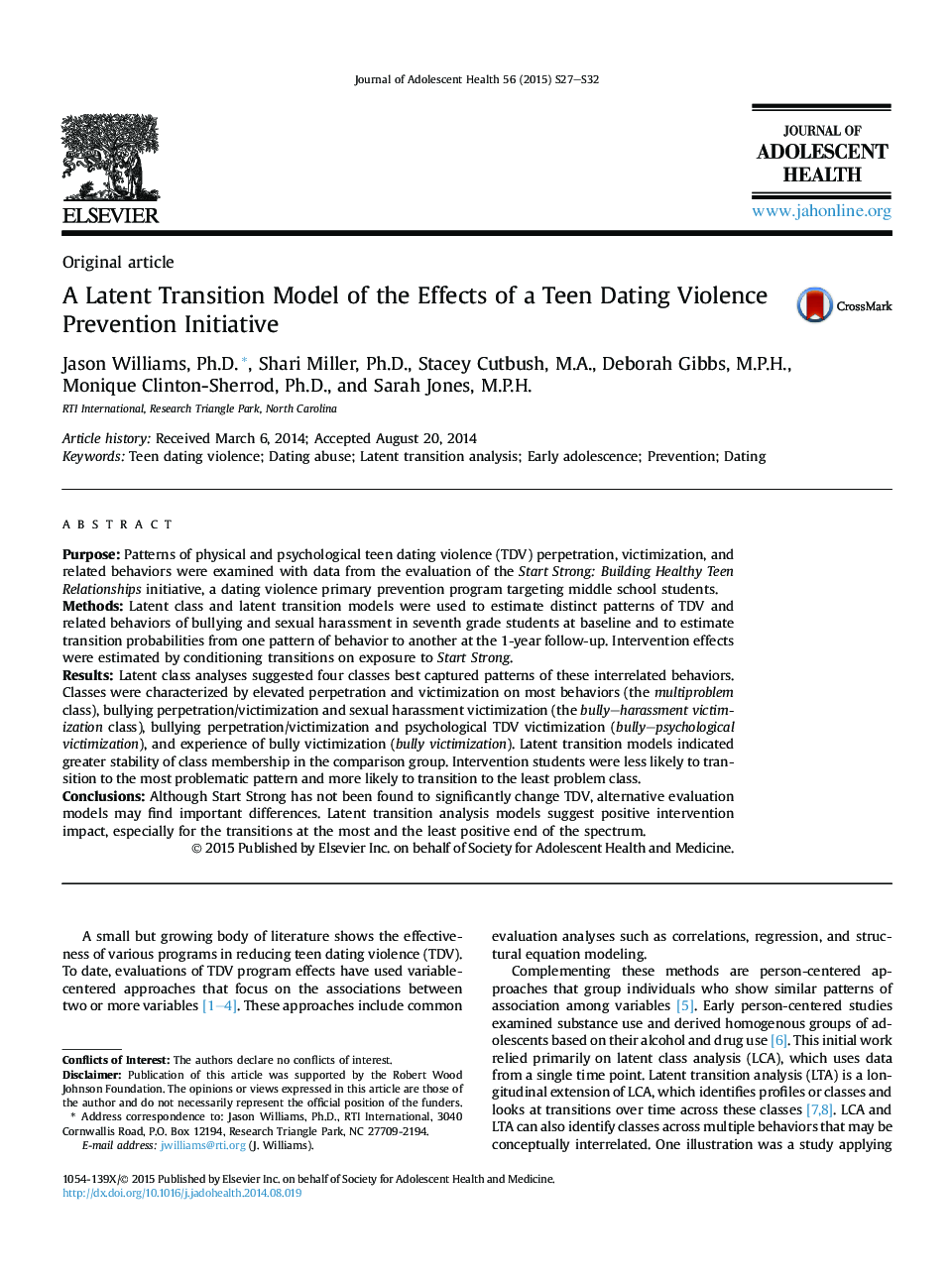| Article ID | Journal | Published Year | Pages | File Type |
|---|---|---|---|---|
| 1078475 | Journal of Adolescent Health | 2015 | 6 Pages |
PurposePatterns of physical and psychological teen dating violence (TDV) perpetration, victimization, and related behaviors were examined with data from the evaluation of the Start Strong: Building Healthy Teen Relationships initiative, a dating violence primary prevention program targeting middle school students.MethodsLatent class and latent transition models were used to estimate distinct patterns of TDV and related behaviors of bullying and sexual harassment in seventh grade students at baseline and to estimate transition probabilities from one pattern of behavior to another at the 1-year follow-up. Intervention effects were estimated by conditioning transitions on exposure to Start Strong.ResultsLatent class analyses suggested four classes best captured patterns of these interrelated behaviors. Classes were characterized by elevated perpetration and victimization on most behaviors (the multiproblem class), bullying perpetration/victimization and sexual harassment victimization (the bully–harassment victimization class), bullying perpetration/victimization and psychological TDV victimization (bully–psychological victimization), and experience of bully victimization (bully victimization). Latent transition models indicated greater stability of class membership in the comparison group. Intervention students were less likely to transition to the most problematic pattern and more likely to transition to the least problem class.ConclusionsAlthough Start Strong has not been found to significantly change TDV, alternative evaluation models may find important differences. Latent transition analysis models suggest positive intervention impact, especially for the transitions at the most and the least positive end of the spectrum.
